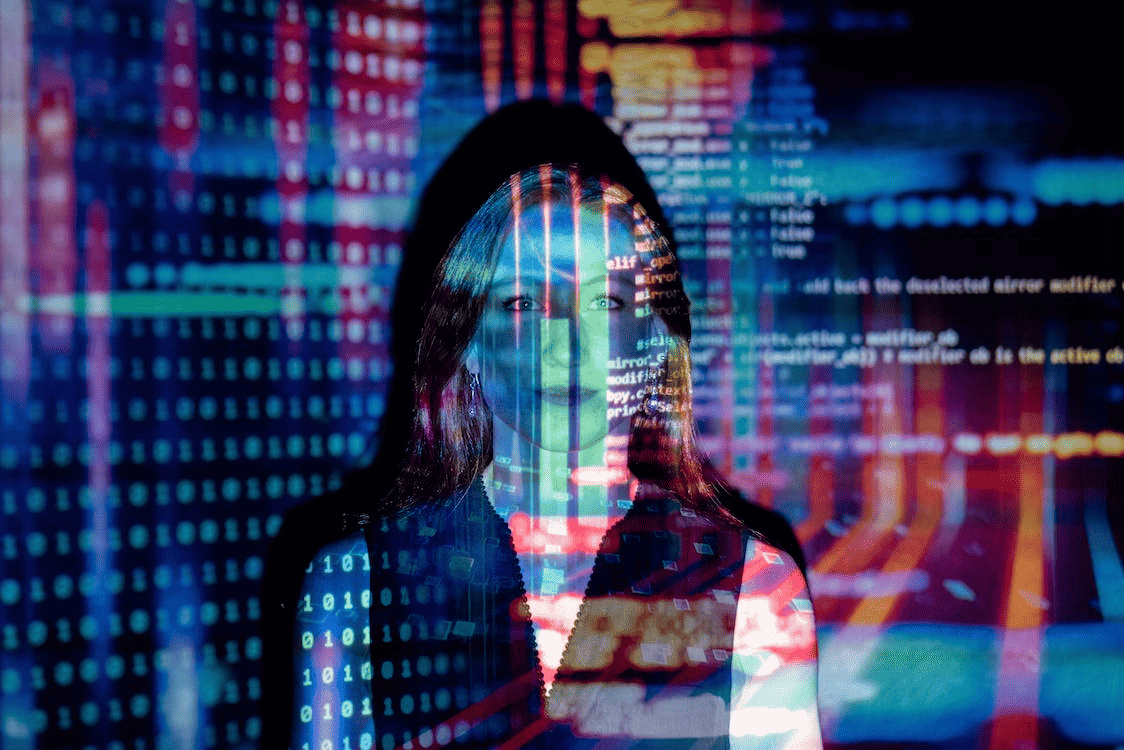In today’s digital age, the clarity of video recordings plays a crucial role across various fields, from law enforcement and security to journalism and entertainment. Critical details are often embedded in low-quality videos, making it challenging to extract valuable information.
Enhancing video quality can significantly impact legal investigations, improve security surveillance, and even enhance historical footage for media production.
Let’s explore the importance of enhancing low-quality videos, discuss common issues encountered in such videos, and look into various techniques used for enhancement, such as partnering with professional digital forensic consultants.
Keep reading to understand how advanced technologies like AI and machine learning provide real-world applications and case studies that emphasize the importance of high-quality videos in forensic settings.
We will also touch upon related fields such as forensic image analysis and the roles of a data forensic expert and forensic video analysis expert in improving video clarity.
The Importance of Enhancing Low-Quality Videos
Enhancing low-quality videos holds significant value across various fields, such as legal investigations, security, and media. In legal contexts, clear video evidence can be the difference between a conviction and an acquittal.
Forensic video analysis experts work tirelessly to enhance footage, revealing crucial details that can support expert testimony in FL and expert witness testimony. Enhanced videos ensure that every piece of evidence is visible and understandable, which is critical for computer forensics expert witnesses and other legal professionals.
In security, enhanced videos play a crucial role in identifying suspects, analyzing incidents, and improving surveillance footage. Clear visuals from digital video forensics can help security personnel and law enforcement agencies to make informed decisions quickly and accurately.
Cyber forensic experts and mobile device forensics professionals often rely on enhanced videos to extract and analyze data from various sources.
The media industry also benefits significantly from video enhancement. High-quality visuals are essential for news reporting, documentaries, and historical footage restoration.
Enhancing old or low-quality videos can bring clarity and detail, making the content more engaging and informative.
Video enhancement is crucial in situations such as criminal investigations requiring cell phone forensic services, security footage analysis, and media production. These enhancements help uncover details that would otherwise be missed, making a substantial impact on the outcome of investigations and productions.
Common Issues with Low-Quality Videos

Image Caption: Clear video footage requires addressing common issues with low-quality videos, such as graininess, blur, and poor lighting.
Image File Name: common-issues-low-quality-videos
Alt-Text: A person holding a video camera.
Low-quality videos often suffer from several common problems that can significantly impair their usefulness. These issues include graininess, blur, low resolution, and poor lighting.
Graininess
Graininess, or noise, refers to the random variation of brightness or color information in video footage. This can obscure crucial details and make it challenging to distinguish between different objects or persons in the video. Forensic video analysis experts frequently encounter this issue and use specialized techniques to reduce noise and enhance clarity.
Blur
Blur can occur due to camera movement, focus issues, or fast-moving objects within the frame. Blurred videos make it difficult to identify key features or actions, reducing the effectiveness of the footage in legal or security contexts. Digital forensic services often employ deblurring algorithms to improve the sharpness of such videos.
Low Resolution
Low-resolution videos lack the pixel density required to capture fine details. This limitation can prevent the identification of important elements such as facial features, license plates, or small objects. Enhancing the resolution through interpolation techniques can help mitigate this issue, making the video more useful for data forensic experts and cyber forensic experts.
Poor Lighting
Poor lighting conditions result in dark, w
ashed-out, or unevenly lit videos. This can obscure critical details and affect the overall visibility of the scene. Digital forensic consultants use color correction and brightness adjustment tools to improve visibility and highlight important details.
These common issues can significantly impact the usefulness of video recordings in legal investigations, security operations, and media production.
Addressing these problems through enhancement techniques is crucial for extracting valuable information from low-quality videos, thereby aiding forensic computer analysts, cell phone forensics experts, and other professionals in their work.
Techniques for Enhancing Low-Quality Videos

Enhancing low-quality videos involves several key techniques that significantly improve their clarity and usability.
Noise Reduction
Noise, or graininess, often results from low-light conditions or older recording equipment. Noise reduction techniques minimize this visual distortion, revealing hidden details.
Tools like Adobe Premiere Pro, DaVinci Resolve, and Amped FIVE use advanced algorithms to reduce noise while preserving essential details. For more on noise reduction, see this Forensic Magazine article on noise reduction techniques.
Resolution Enhancement
This technique increases the pixel density of a video, making it sharper and more detailed. Super-resolution algorithms and upscaling methods, such as those in Topaz Video Enhance AI and Adobe Premiere Pro, are used to add extra pixels and improve clarity.
Enhanced resolution allows for the extraction of fine details, crucial for identifying faces, license plates, and other elements in digital forensic services.
Frame Interpolation
Frame interpolation generates intermediate frames between existing ones, resulting in smoother video playback. This method, used in tools like Twixtor and Adobe After Effects, improves the fluidity and clarity of motion, making videos easier to analyze and interpret for forensic video analysis experts and computer forensics consultants.
Color Correction
Adjusting the colors in a video to appear more natural and consistent is essential for enhancing visibility. Techniques such as white balance adjustment, contrast enhancement, and saturation control are used in tools like DaVinci Resolve and Adobe Premiere Pro.
Effective color correction ensures that key elements in the video are accurately represented, aiding forensic image analysis and digital video forensics.
Advanced Technologies in Video Enhancement

The advent of artificial intelligence (AI) and machine learning (ML) has revolutionized the field of enhancing low-quality videos. These advanced technologies offer powerful tools for improving video clarity, extracting crucial details, and making otherwise unusable footage valuable.
AI and Machine Learning in Video Enhancement
AI and ML algorithms are designed to learn from vast amounts of data, making them particularly effective in video enhancement.
These algorithms can identify patterns and details that human analysts might miss, automatically improving video quality. AI-powered tools can upscale resolution, reduce noise, correct colors, and even reconstruct missing parts of the video with remarkable accuracy.
Software and Tools
Several software solutions leverage AI and ML for video enhancement. Topaz Video Enhance AI uses machine learning models to upscale video resolution and enhance details. Google’s DeepMind has developed AI algorithms that can significantly reduce noise and blur in videos. Other tools like Adobe Premiere Pro and DaVinci Resolve are incorporating AI features to assist in various enhancement tasks, such as color correction and frame interpolation.
Impact on Forensic and Security Fields
The integration of AI and ML in video enhancement has significant implications for forensic and security fields. Forensic video analysis experts can now achieve unprecedented levels of detail and clarity, making it easier to identify suspects and analyze incidents accurately.
These technologies also streamline the workflow for digital forensic experts, allowing them to process and enhance large volumes of video data efficiently.
Future Trends
The future of video enhancement looks promising with continuous advancements in AI and ML. Emerging technologies such as deep learning and neural networks are expected to further refine video enhancement techniques, providing even more precise and reliable results.
Additionally, the integration of AI with other forensic tools will likely lead to more comprehensive and automated solutions, enhancing the capabilities of digital forensic consultants and computer forensics consultants.
By improving video clarity, critical details that might otherwise be missed can be revealed, making a significant impact on the outcome of cases and the quality of content.
Technological advancements, particularly in AI and machine learning, have revolutionized video enhancement. The continuous development of these technologies promises even more precise and reliable results in the future, further enhancing the capabilities of forensic video analysis experts.
Given the complexity and importance of video enhancement, it is essential to seek professional services to ensure the best results. At Eclipse Forensics, we offer comprehensive video enhancement services that utilize the latest tools and technologies.
Our team of experienced professionals is dedicated to transforming low-quality videos into clear, detailed, and actionable content, whether for legal, security, or media purposes.
Contact us now to leverage premier digital forensic experts’ services to be fully prepared for your next forensic video analysis!
























